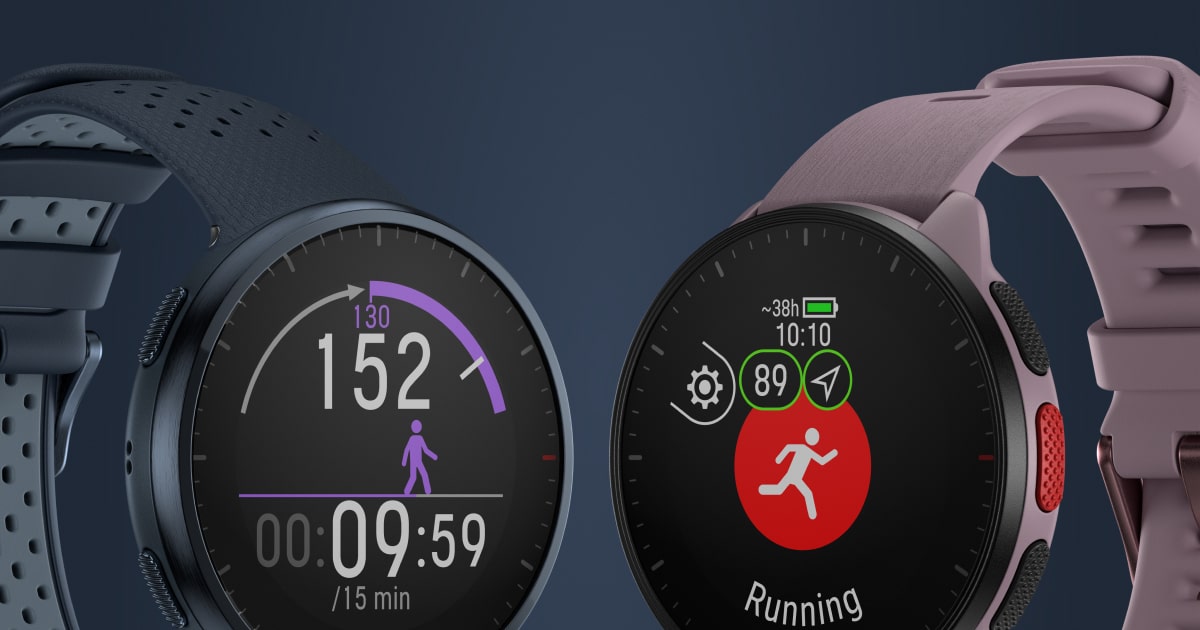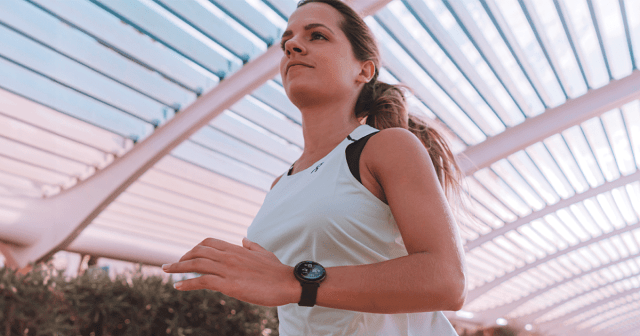Running in the heat or extreme humidity can challenge any sports enthusiast, even elite athletes. Any physical activity generates heat and increases our body temperature. Get too hot while exercising and your body temperature can rise above normal, leading to heat exhaustion and other heat-related illnesses, like heat stroke.
Warm-blooded animals like us need to maintain a constant core temperature, so we use mechanisms, such as sweating, to regulate our body temperature. When heat rises, it becomes more difficult to eliminate the heat generated by exercise, so how do we keep on running in the blistering heat? As the hottest days of the year approach, we thought it’d be a good to share shares how high temperatures impact the body and what we can do to continue running safely.
What running in the heat does to your body
# 1. drinking water IS CRITICAL
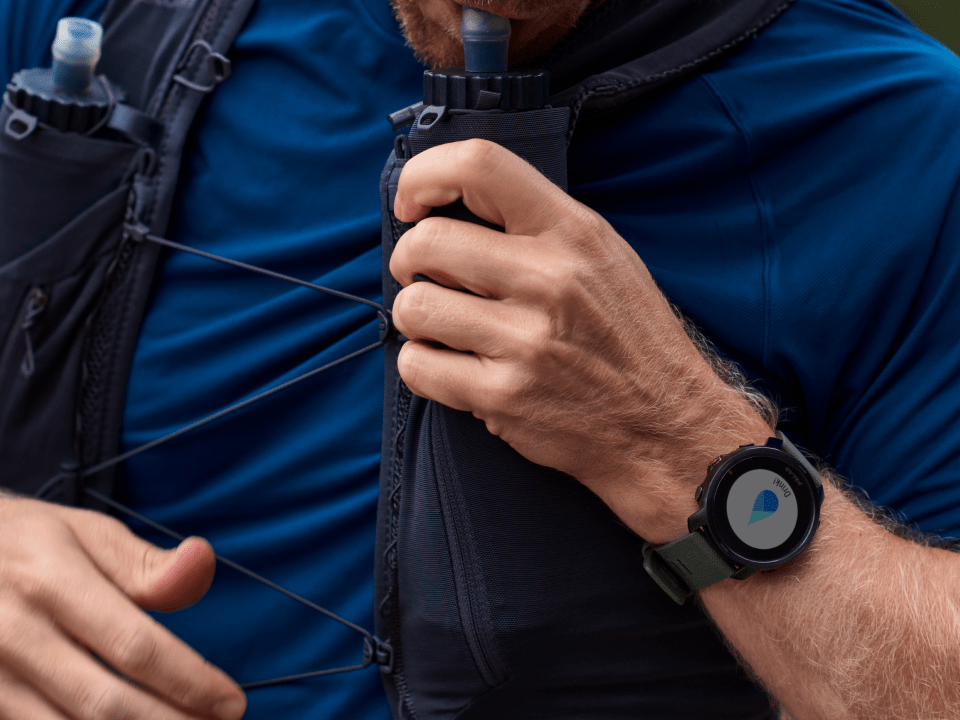
This is as obvious as it gets: the harder we exercise, the more we need to drink water. But how does drinking water help us deal with heat?
During exercise, drinking water is related to a mechanism to control body temperature. When water evaporates through sweating, water molecules carry heat away from our body, effectively lowering body temperature.
The maximal sweating capacity of a person can increase from 1.5 liters per hour in an unacclimatized individual to 4 liters per hour in someone acclimatized to hot weather. The amount of water we can drink, about 0.7 liters per hour, is often lower than the amount of sweat we produce, what results in net fluid loss. This means that during exercise we need to aim at keeping this fluid loss at a minimum.
Healthy individuals can temporarily deal with a fluid loss of around 1–2 % of body weight, without significant problems whereas 10 % loss is fatal.
But eventually, lost water must be replenished. The best practice to maintain fluid balance is to drink before, during and after a run. It’s always recommended to drink water before thirst appears – being thirsty is the first sign of dehydration, an alarm from the body.
When we run in the heat, it’s also important to watch out for signs of dehydration. You should stop the exercise if you feel dizzy or lightheaded, muscle twitches, disorientation, nausea, or headaches.
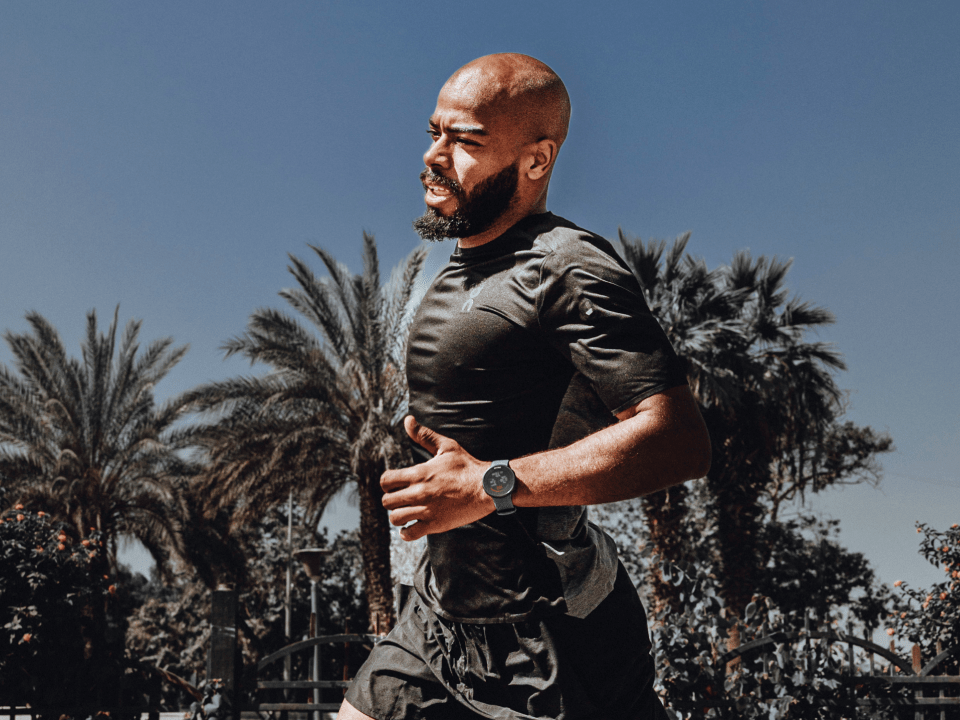
#2. Heat will slow you down, but heart rate will guide you
There’s a correlation between speed and heat. Running fast increases body temperature and that’s why at certain temperatures, even marathoners and elite athletes slow down. Let’s see why.
Body heat production is related to metabolic rate – the rate at which muscles convert chemical energy to support bodily functions including physical work. Even without any activity, vital functions are responsible for basal metabolic rate (BMR), which equates to about 1.2 W/kg.
In running, metabolic rate can be expressed in relation to BMR and speed. When the running speed equates to 10 km/h, the metabolic rate is 10 times the BMR. Speeding up to 15 km/h elevates metabolic rate to 15 times the BMR. Thus, a good approximation is that metabolic rate equates to BMR multiplied with speed given as km/h.
As the rate of generation of heat is comparable to speed, reducing average speed is an effective strategy to cope with heat. This can be done by slowing down or extending recovery periods during interval runs, which reduces mean speed.
Hot weather increases heart rate. Blood circulation demand is greater as blood effectively transfers heat away from the core to the skin where it can be removed. Your heart rate spikes as your body works to combat the effects of overheating.
That’s why pace is a terrible indicator of effort in the heat. Heart rate is better. If you’re used to run a 10k at 5:10 min/km (8:19 min/mile), averaging 140 bpm, it’s better to stick to the same heart on a sweltering day instead of trying to push your usual pace but with a higher heart rate.
That’s why pace is a terrible indicator of effort in the heat. Heart rate is better. If you’re used to run a 10k at 5:10 min/km (8:19 min/mile), averaging 140 bpm, it’s better to stick to the same heart on a sweltering day instead of trying to push your usual pace but with a higher heart rate. Here’s more on how to train according to your heart rate zones.
#3. Check the temperature to assess the risk level
When the temperature rises, there is a point when you need to start making adjustments to cope with the heat. That moment relates to thermal radiation, a secondary method that is responsible for transferring heat between the body and environment.
Thermal radiation depends on the temperature difference between body and environment. If the environmental temperature is below skin temperature, heat is transferred from body to environment. In the opposite case, when the environment is hotter than skin, heat flux is reversed, and heat is transferred from the environment to the body.
The higher the environmental temperature, the higher the risk that physical activity could cause harmful effects in our bodies and more precautions we should take. Here are some guidelines:
| Temperature | Risk | Recommendation |
| 10° – 18° C (50° – 65° F) | Low | Normal activity |
| 18°– 22° C (65° – 72° F) | Moderate | Normal activity, monitor fluid intake |
| 22° – 28° C (72° – (82° F) | High | Limit pace or duration, add breaks |
| More than 28° C (> 82° F) | Extreme | Cancel exercise |
EXERCISE GUIDELINES IN ELEVATED TEMPERATURE. Be aware that temperature, humidity, wind speed, sun angle and cloud cover all play a role in determining how the body reacts to exercise. Inexperienced runners are advised to start easy and gradually increase exercise intensity and duration in new conditions. (Table modified from Ref. 1)
Running in the heat: Tips and recommendations
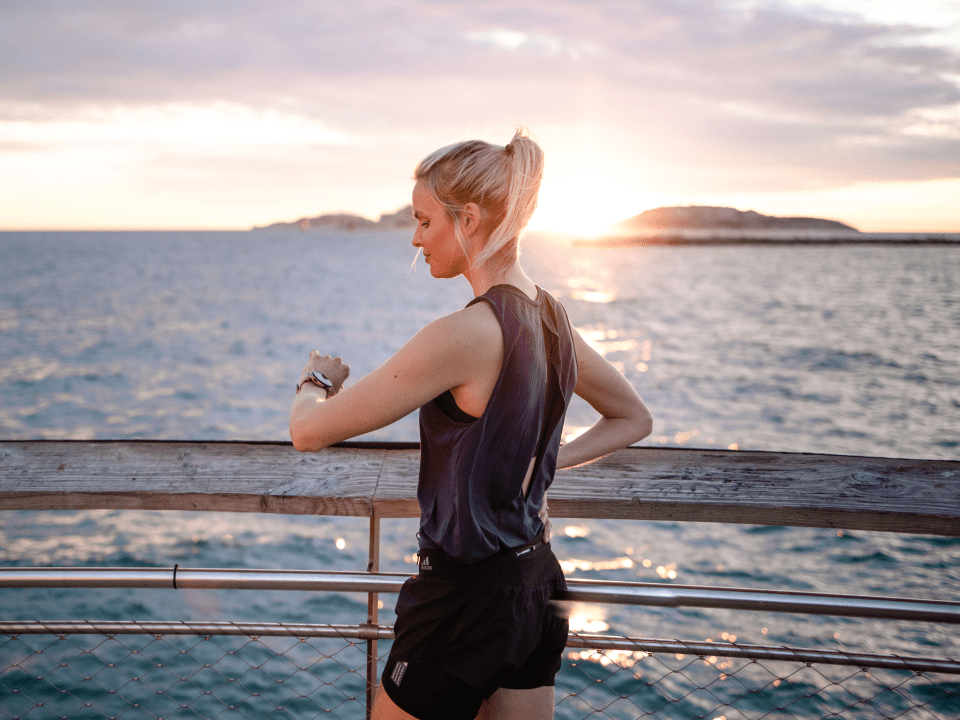
So, what to do if the weather forecast promises blazing heat wave but you don’t want to miss your scheduled runs? The obvious solution is to run indoors where temperature can be controlled.
If running indoors is not your thing, there are few things you can do keep on running in the heat safely.
- Run around sunrise. Even on a blistering day, those are the coolest hours. Not a morning person? Avoid midday and run in the evening when sun and temperature are milder.
- Skip breakfast before your run your run or avoid eating right before running. Digestion always produces some heat, so running on an empty stomach will help you tolerate the heat.
- Carry water with you or check beforehand if there are water fountains along your route.
- Give yourself time to acclimitize to hot weather and avoid the most intense workouts during the first days of the heatwave. Increase gradually the length and intensity of your training.
- Wear loose-fitting clothes to allow air to pass over and cool your skin.
- Drink a good amount of water right before you start. If done on an empty stomach, water is readily absorbed and won’t negatively affect your running.
Reference(s)
- Armstrong, Lawrence E. Ph.D., FACSM (Chair); Casa, Douglas J. Ph.D., ATC, FACSM; Millard-Stafford, Mindy Ph.D., FACSM; Moran, Daniel S. Ph.D., FACSM; Pyne, Scott W. M.D., FASCM; Roberts, William O. M.D., FACSM Exertional Heat Illness during Training and Competition, Medicine & Science in Sports & Exercise: March 2007 – Volume 39 – Issue 3 – p 556-572. doi: 10.1249/MSS.0b013e31802fa199
If you liked this post, don’t forget to share so that others can find it, too.
Or give it a thumbs up!
I like this article
Please note that the information provided in the Polar Blog articles cannot replace individual advice from health professionals. Please consult your physician before starting a new fitness program.

